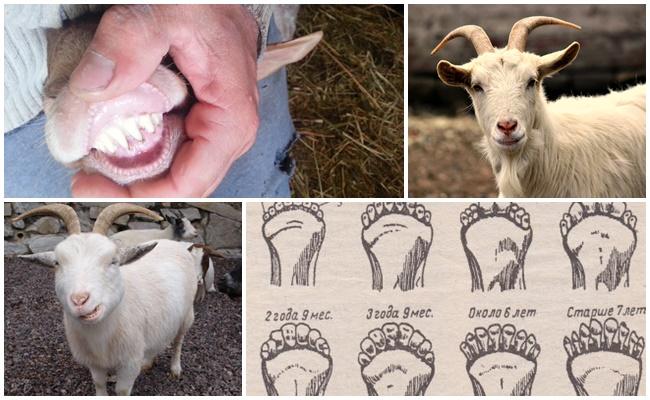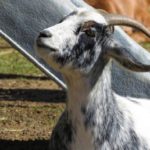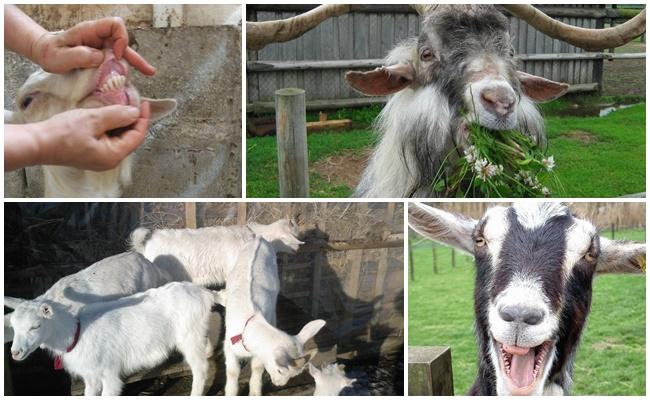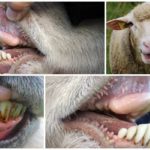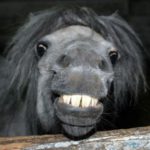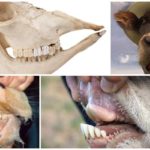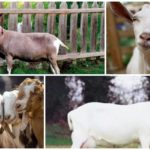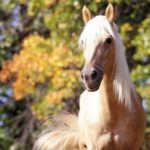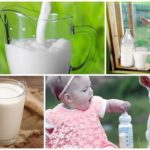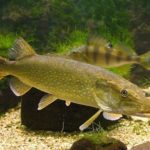When buying a goat, a new farmer often experiences doubts and anxiety. A person can be understood, because the productive period in an animal’s life comes to an end after 8 years of life. Knowing how to determine the exact age of a goat will help you avoid disappointment. In order to make a choice, an experienced breeder carefully examines the teeth and evaluates the appearance of the horned beauty.
Determining age by dental condition
Based on the condition of the horned beauty's incisors, one can draw the most accurate picture of the animal's age and productivity.
The passage of time is inexorable, and biological processes are reflected, first of all, on the skeletal system and teeth of the pet.
- As befits a baby, a baby goat is born defenseless and toothless. When you feel the gums in the baby’s mouth, you can guess the rudiments - the tubercles of future incisors. The first teeth, called toes, appear by the end of the first week. After another 5-6 days, the baby will develop internal and external teeth - incisors.
- By the end of the first month of life, the kid's jaw acquires new teeth - edges. At this stage, all the primary incisors are lined up in an orderly row.
- Within 90 days from the moment of birth, the pet’s teeth are actively forming. As a result of the continuous work of the body, the edges take their final shape.
- The onset of 4 months of age is associated with the appearance of a new type of teeth - molars. At this stage, the rate of development of molars in the lower jaw is somewhat faster than the upper part.
- 5-9 months. This is a difficult period to determine the age of a kid. At this moment, the condition of the incisors depends entirely on the diet of the animals. Depending on the types of food, animals wear down their teeth at different rates. Tender, soft food does not require any effort to chew, while the animal has to grind rough food thoroughly. Careless owners can often find a pet with completely worn out incisors.
- Guessing the age of a 9-month-old pet is much easier. It is at this moment that the pet’s second row of back teeth – molars – grows.
- The next noticeable milestone in the pet's development is the period from 1.3 to 1.4 years. During this period, there is an active replacement of milk hooks with permanent, molar teeth.
- By 18 months, the main formation of the dentition ends. The pet's rear third molars are clearly visible. A pair of permanent incisors is clearly visible in front.
An adult has 32 young, healthy teeth. 8 of them remain dairy, and 24 are indigenous. Deciduous incisors are easily distinguished by their white color. The shade of the molars is yellowish, sometimes creamy.
In the future, the approximate age of the animal is calculated by the location and appearance of the teeth. It is not difficult for an experienced farmer to get a picture of the animal’s daily diet and health status.
Changes in the condition of the teeth occur throughout the life of the animal. By the age of 2 years, the pet will grow a new pair of lateral incisors.
- By the age of 3, the pet can boast 6 permanent teeth. Up to 4 years of age, lost baby teeth are replaced by permanent teeth.
- At 4 years old, the front teeth located in the lower part of the jaw are large, wide, without signs of decay or disease. The edges reach the same level as the incisors. The dentition is closed. Literally after 6 months, the teeth wear away, and the tops of the middle incisors look beyond the gums
- In a 5-year-old animal, the outlines of the incisors are rounded. This effect is achieved due to pronounced tooth wear. Gaps are already visible between the incisors. The degree of abrasion largely depends on the animal's diet. If the pet is given mainly rough food (rough hay, hard branches), the teeth deteriorate very quickly.Introducing crushed grain and soft hay into the goat’s diet helps prevent trouble.
- After 6-7 years, the teeth take on a tubular shape. They seem to “spread” to the sides.
- 8-9 years is a critical age for the condition of your pet’s teeth. They become fragile and literally crumble when chewing food. It is difficult for an animal to grind regular food. Age-related changes have a deplorable effect on milk yield and quality of milk.
If a breeding animal is of value to the farmer, the pet is switched to special food. A gentle diet includes crushed feed, chopped hay or steamed grass pellets.
It is worth noting that in rare cases there are unique people who retain their teeth until the end of their lives. The quality of food, water and climatic conditions influence the pet’s condition.
How to determine the age of a goat by its horns
Scammers love to tell a story about accurately determining the age of an animal by the ring patterns decorating its horns. According to the “experts,” the number of rings can be used to judge the number of years lived and lambings. Of course, this statement has no relation to reality. A goat is not a tree, and cannot boast of annual rings on its horns, so it is unlikely that with the help of a pattern it will be possible to find out all the ins and outs about the pet. However, there is one small nuance here. If large growths are clearly visible on the animal’s horns, most likely the goat has reached a respectable age. In addition, a one-year-old animal’s horns have an even shape and are pointing upwards provocatively. In an older individual, the horns bend back.
By external signs
When buying a goat, you should pay attention to the condition of the animal's fur. The owner of shiny, silky hair is most likely young and healthy.This is not what the old one looks like at all. After the animal reaches 8-9 years of age, the fur becomes dull and sparse. However, this method cannot be called reliable. The quality of a pet’s fur largely depends on the conditions of its keeping and a quality diet.
The age of the pet is also indicated by its body features.
- The young specimen's hooves are still soft. Adult animals often suffer from deformed hoof horns.
- The body of an old animal is bony. The protruding spine, protruding toes, thickened joints on the limbs leave no doubt about the venerable age of the goat.
- In nulliparous pullets, the udder appears only towards the end of pregnancy. A few weeks before giving birth, the ovary begins to swell. After the first lambing, the goat's udder is small, round, without pigmentation. The nipples are small.
- Adult goats have drooping, large udders.
- The outline of the body of a young individual is square in shape, while the body of a mature animal resembles a rectangle.
- The small head of a young goat is somewhat small compared to the size of the body.
- In young animals it is difficult to determine breed characteristics. This is explained by the peculiarities of animal development. The appearance of the pet is finally formed only by 4 years.
You can distinguish young animals from older individuals by observing the behavior of pets in the herd. The young generation of goats spends time playing with their peers, actively running and jumping. Adult animals are not prone to such agility; they graze measuredly in the place allocated for them.
Erroneous methods
People often try to determine age by the presence of a beard. This is a mistake; not only an adult goat can have a beard, but also a young goat. It is also impossible to know the exact age of a goat by the size of its udder.

